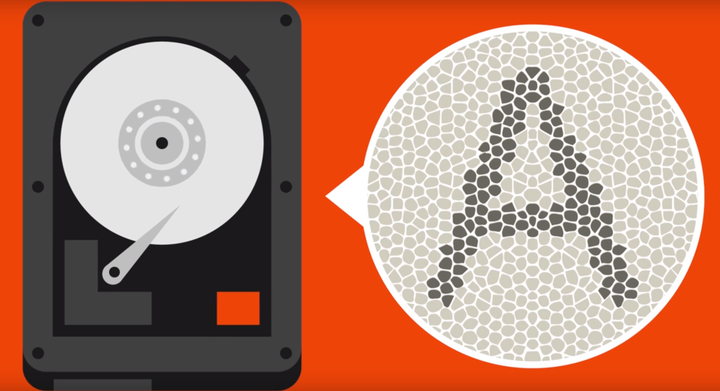A team of researchers in the Netherlands have found a revolutionary way of reducing storage space to the ultimate limit.
The scientists have created a storage device that writes information atom-by-atom, and have managed to store one kilobyte of data, equal to 8,000 bits, using 8,000 chlorine atoms.
Sander Otte, the lead scientist on the project, said: “In theory, this storage density would allow all books ever created to be written on a single postage stamp.”
The researchers achieved a storage density of 500 Terabits per square inch, which is 500 times better than the best commercial hard disk to date.
Moore’s Law predicts that the number of transistors in a dense integrated circuit doubles every two years. In layman’s terms, Moore believed that computers would become twice as powerful every 24 months.
Over the last few years, technologists have debated whether the principle still holds up. In May, the MIT Technology Review proclaimed that after 50 years of advances in computing, the rate of progress had slowed. Moore’s Law is dead, the article pronounced.
But as processors continue to develop, albeit at a slower pace, engineers face a new problem that is equally challenging: how to store the world’s data.
Each day, we collectively create more than a billion gigabytes of new data. In fact, every two days we create as much data as the entire history of humanity up to 2003.
An alternative technique is needed if we are to curb the proliferation of expensive and energy-thirsty data storage centres across the world.

The idea of using atoms for storage was originally proposed by the physicist Richard Feynman more than 50 years ago. In his famous lecture There’s Plenty of Room at the Bottom, Feynman suggested that a platform allowing engineers to arrange individual atoms in an orderly pattern would enable the storage of one piece of information per atom. In a nod to Feynman’s vision, Otte’s team coded part of the lecture on an area just 100 nanometres wide.
So how does it work? Well, the concept is surprisingly simple. Otte explained: “Every bit consists of two positions on a surface of copper atoms, and one chlorine atom that we can slide back and forth between these two positions. If the chlorine atom is in the top position, there is a hole beneath it—we call this a one. If the hole is in the top position and the chlorine atom is on the bottom, then the bit is a zero.”
The chlorine atoms are surrounded by more chlorine atoms, except from near the holes, meaning they keep each other in place. The researchers claim this makes their method much more stable than alternatives that rely on loose atoms.
However, the storage technique won’t be rolled out across data centres just yet. In its current form, the device can, according to Otte, only operate in vacuum conditions and at liquid nitrogen temperature.
Nevertheless, he added that while mass production of the tech is still some way off, this development marks a significant step forwards.
